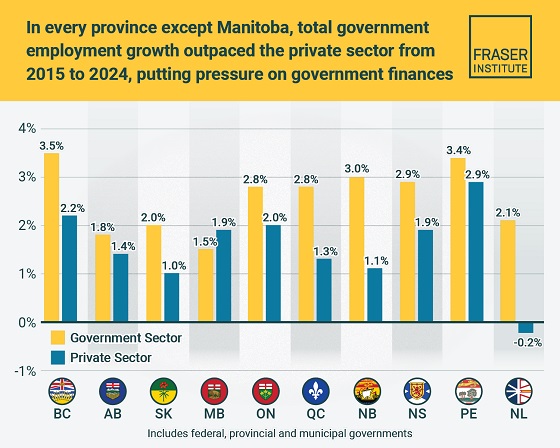Economy
The Green Army Will Keep Pushing Unrealistic Energy Transition in 2025 Despite “Reality”

From EnergyNow.ca
By Irina Slav
The facts behind energy transition are so staggeringly counter to common sense that the only way to achieve them is by force, and the only path ahead is failure.
I was going to wrap this eventful year with a nice little post of gratitude but, as usual, the news flow has forced me to revise my plans. So much has happened in the last week days failing to report on it would be a real shame. You may want to put down the hot beverage or, then again, not put it down, you’re the master of you.
A few years ago, during some election campaign or other — we’ve had so many it’s hard to keep track — one of the most popular parties in Bulgaria chose as its slogan “Work, work, work!” Naturally, the slogan became the butt of many jokes almost immediately.
More recently, we were graced with the “Fight! Fight! Fight!” adage from the Trump campaign that was nowhere near as amusing. It also worked. Meanwhile, the transition army is moving fast towards a “Force! Force! Force!” stage in its efforts to keep the green ball rolling.
Consider the latest gem from the International Energy Agency, out this week. The press release for the report was headlined Global coal demand is set to plateau through 2027, with the subheader summary stating that “New IEA report finds that strong deployment of renewables is set to curb growth in coal use even as electricity demand surges, with China – the world’s biggest coal consumer – remaining pivotal.”
What the report actually admitted, however, was that coal supply and demand hit an all-time high this year, they are both likely to scale new highs next year and keep going in that direction until at least 2027. The way things are going with the transition, coal will probably continue growing beyond 2027 as well because much as Fatih and the Transitionettes want it to die, they can’t tell China and India what to do — or anyone else, really, when push comes to shove.
Push appears to have come to shove in Canada already, with the federal government suddenly deciding to walk back its plan for a net-zero grid by 2035. Now, it will be aiming for a net-zero grid by 2050, which is what is going to be happening elsewhere as well —except perhaps in the UK, where everyone’s gone truly insane but more on that later.
So, Canada last week released something called Clean Electricity Regulations that originally, I gather, were supposed to outline plans to remove hydrocarbons from its already pretty green grid by 2035. The provinces, however, objected. And they must have objected strongly enough for an ounce of sanity to crawl into the regulations. Resource minister Jonathan Wilkinson of “We are not interested in investing in LNG facilities” fame called it “flexibility”. Whatever works to make one feel good, I guess.
Here’s a fun fact: the new Clean Electricity Regulations with the revised target come out literally days after the Trudeau government pumped up its emission cut plan, aiming for cuts of 45-50% from 2005 by 2035. All it took was six days and the start of what might end up being complete government meltdown to reconsider that deadline and delay it by 15 years. But stranger things have happened and some are happening right now, one of them at the U.S. Department of Energy.
The regulator of the department, Inspector General Teri Donaldson said in an interim report that the loan office of the DoE should stop giving out loans to green project developers on suspicion of conflicts of interest, or, as Reuters put it, “contractors who vet them may be serving both the agency and potential borrowers.”
From Donaldson’s report: “The projects funded with this authority, which involve innovations in clean energy, advanced transportation, and tribal energy are inherently risky in part because these projects may have struggled to secure funding from traditional sources such as commercial banks and private equity investors.”
Yet these same projects got DoE funding, which naturally raises the question of whether this funding success was at least in part related to the department’s failure to ensure everyone involved in the process was impartial and driven exclusively by professional motives, and I cannot believe I managed to put this stinky situation so delicately.
Anyway, the DoE has struck back immediately, saying the report was full of errors, and accusing Donaldson of “fundamentally misunderstanding” the “implementation of contracting in the Loan Programs Office.” Yeah, that must be it. That’s why she was appointed Inspector General of the department — but by the Trump administration so it doesn’t count.
All of this, however, is pretty weak beer compared to what’s been happening in Europe. VW is not yet bankrupt and the lights are still on in Germany, for the time being, but in the UK, the government has apparently found a way to grow money on trees because the grid operators of the three constituent parts of the UK’s bigger island are planning to spend 77.4 billion pounds on grid upgrades with a view to accommodating more wind and solar into said grid.
The upgrade is a must if Labour’s 2030 decarbonization plan is to have a fighting chance even though the outcome of that fight is already clear and it rhymes with beet, feet, and meat. The money is to be spent between 2026 and 2031, which means that the money trees take two years to start bearing fruit.
Yet here is my concern: with every other form of plant life susceptible to the devastatingly catastrophic effects of climate change, who is to guarantee that the money trees will be spared the devastating catastrophe? No one, that’s who. The UK may fail to accomplish its task of decarbonizing the country’s grid because of the very climate change it wants to neutralize with that decarbonization, and how cruel of an irony is that? Very, is the answer.
Usually, the UK government is difficult to rival in insanity and anti-intelligence but this week we have a serious contender and it’s not Germany’s government. It’s Big Oil and the heavy industry. That’s right. Europe’s energy and heavy industries have been driven to insanity by the climate crusade army although I’d stop short of painting them as innocent victims.
They could have said something. They should’ve said something. And they should’ve said it loud and clear. But they didn’t, so now Big Oil and Big Heavy Industry are asking the EU to force — that’s right, force — consumers to buy their transition cost-loaded products. Because there is no other way of selling those products.
““We will need to focus on demand creation to achieve new investment prospects,” executives from the two sectors said in a letter to Wopke Hoekstra, EU climate commissioner, warning of an “industrial exodus” without intervention,” the FT reported this week.
It also reported that “companies trying to invest in production methods that may result in lower carbon emissions are “pricing themselves out of the market” due to high costs, and authorities need to step in to create demand for their products.” I think this is beautiful, in the same way that an orca catching its pray is beautiful, that is, in a rather terminal way.
I don’t normally like to brag about being right about things, not least because it’s invariably bad things I’m right about, so it is with a sigh of frustration and some boredom that I have to note I have been saying this for two years now — and of course I haven’t been the only one, far from it. The only way for the energy transition to work is through force, and a lot of it. The only way for the transition to work is to eliminate all alternatives to the Chosen Tech, and for some reason Big Oil and the heavy industry seem to believe this is a constructive approach to life, the universe and everything.
What I find most interesting in this situation is the fact that it is extremely easy to find evidence the forceful approach tends to result in outcomes that are the exact opposite of the intended ones. History is full of such evidence. Yet it appears the most essential industries for modern civilization have taken the green “It will work this time” pill and are eagerly digesting it. Which means two things we already knew: one, the transition is doomed as it has been from the start; and two, Europe’s going down unless it uses a fast-closing window to come to its senses. We all know it won’t — unless it’s forced to. Work, work, work, force, force, force, fight, fight, fight.
Business
Is affirming existing, approved projects truly the best we can do in Canada?

From Resource Works
For major projects, what is old is new again
Prime Minister Mark Carney’s second wave of “nation-building projects” sounds transformative: six new energy and mining proposals, plus a northern corridor, added to the first tranche unveiled in September, and included in the freshly passed federal budget for the fiscal year.
Together, Ottawa says, they amount to more than $116 billion in investment and are central to “realizing Canada’s full potential as an energy superpower.” That is the pitch in the federal news release.
Look closely, though, and a different picture emerges. For major projects, what is old is new again. Almost every file now being “fast-tracked” was already on the books, sometimes for a decade or more.
The new referrals to the Major Projects Office (MPO) are all familiar: the Nisga’a-led Ksi Lisims LNG terminal on B.C.’s north coast; BC Hydro’s North Coast Transmission Line; Canada Nickel’s Crawford project near Timmins; Nouveau Monde Graphite’s Matawinie mine north of Montréal; Northcliff’s Sisson tungsten project in New Brunswick; and the Inuit-owned Iqaluit Nukkiksautiit hydro project in Nunavut. The “Northwest Critical Conservation Corridor” in B.C. and the Yukon is added as a long-range concept.
Long timelines and longstanding obstacles
None of these is a fresh idea. As the Globe and Mail notes in a project-by-project rundown, Ksi Lisims has been in development for years and already faces two Federal Court challenges from nearby First Nations and opposition from Wet’suwet’en hereditary leaders who fought Coastal GasLink. The North Coast Transmission Line was identified in 2023, with B.C. legislation to fast-track it and term-sheet co-ownership deals with First Nations already in place. The Sisson mine has been stalled at the pre-construction stage for more than a decade, despite earlier approvals and new public money to update its feasibility study.
Iqaluit hydro is hardly a novelty either. As Globe reporting shows, dam concepts near the city have been studied since the mid-2000s, with the current Inuit-owned proposal building on that earlier work and backed by federal engineering funds. The Crawford nickel project was acquired in 2019 and has spent years lining up investors and a complex financing stack, documented in both CBC and Financial Post coverage. Matawinie received its Quebec authorization in 2021, has an impact-benefit agreement with the local Atikamekw Nation and now enjoys federal price-floor guarantees on graphite.
The first tranche, announced in September, follows the same pattern. LNG Canada Phase 2 in Kitimat, new nuclear at Darlington, Contrecoeur container capacity at the Port of Montréal, McIlvenna Bay in Saskatchewan and the Red Chris expansion in B.C. were all in various stages of planning long before Carney entered office. The MPO is not inventing a new project pipeline; it is trying to accelerate the one Ottawa already had.
Acceleration is the point — and industry welcomes it
Acceleration is, to be fair, the point. The Calgary-based MPO, led by former Trans Mountain head Dawn Farrell, is designed to run permits in parallel, not one after another, and to coordinate financing through bodies like the Canada Infrastructure Bank and Canada Growth Fund. Farrell told CBC that work which might have taken “five or six more years” could be cut to roughly two. In a country where large projects regularly die of regulatory exhaustion, that is significant.
Industry likes the signal. Canada Nickel CEO Mark Selby says MPO referral “puts us in the fast lane,” even without the more controversial “national interest” label in Bill C-5 that would allow cabinet to set aside parts of the Fisheries Act, Species at Risk Act or Impact Assessment Act. Inuit proponents of the Iqaluit project welcome Carney’s description of their hydro plan as a breakthrough for Arctic sovereignty, replacing millions of litres of diesel.
But a superpower strategy this is not
Still, if this is what becoming an “energy superpower” looks like, it is a modest start.
Notably absent from Carney’s list is any new oil pipeline. Alberta Premier Danielle Smith has spent months pushing a concept for a bitumen pipeline from the oil sands to the northern B.C. coast, doing provincial groundwork in the hope a private proponent will one day take it over. A BBC report sets out the feud with B.C. Premier David Eby, who dismisses the idea as “fictional” and “political” and insists no company wants it, accusing Smith of jeopardizing B.C.’s LNG ambitions. Smith has called that stance “un-Canadian.”
Western frustration is growing. In the National Post, Whitecap Resources chief executive Grant Fagerheim warns of “fury from Alberta and Saskatchewan” if a pipeline to tidewater is never prioritized and argues producers are tired of a U.S.-dominated system where Canadian barrels sell at a discount while others capture the margins. He favours an energy corridor carrying oil, gas, power and rail, not just more rhetoric about nation-building.
Northern ambitions lag behind rhetoric
Another gap is the North. The Indigenous-led Arctic Gateway partnership, Manitoba and Ottawa are already spending heavily on the Hudson Bay Railway and planning new storage and loading systems to expand the Port of Churchill for grain, potash, critical minerals and Arctic resupply. Carney talks up a “huge host of opportunities” in northern Manitoba, but Churchill sits only on the MPO’s lower-profile “transformative strategies” list, with a full plan now pushed out to 2026.
Meanwhile, the one project that has fundamentally shifted Canada’s oil export position is the long-delayed Trans Mountain expansion. As Resource Works points out, TMX now sends diluted bitumen from Burnaby to Asia, shrinking the old “captive discount” and giving Canada genuine leverage in global markets. But TMX predates Carney’s government by more than a decade and only exists because Ottawa nationalized a struggling private pipeline to get it built.
Evolution, not revolution
Carney’s major-projects push is real, and for the companies involved, the prospect of faster permits and clearer federal backing is very good news. Yet for a government that talks about mobilizing a trillion dollars and remaking Canada as an energy superpower, the current list is evolutionary rather than revolutionary. For now, Ottawa is mostly trying to build what was already on the drawing board. The tougher choices on pipelines, ports and interprovincial trade still lie in front of it.
Headline photo credit to THE CANADIAN PRESS/Adrian Wyld
Business
Taxpayers paying wages and benefits for 30% of all jobs created over the last 10 years

From the Fraser Institute
By Jason Childs
From 2015 to 2024, the government sector in Canada—including federal, provincial and municipal—added 950,000 jobs, which accounted for roughly 30 per cent of total employment growth in the country, finds a new study published today by the Fraser Institute, an independent, non-partisan Canadian public policy think-tank.
“In Canada, employment in the government sector has skyrocketed over the last 10 years,” said Jason Childs, a professor of economics at the University of Regina, senior fellow at the Fraser Institute and author of Examining the Growth of Public-Sector Employment Since 2015.
Over the same 10-year period (2015-2024), government-sector employment grew at an annual average rate of 2.7 per cent compared to only 1.7 per cent for the private sector. The study also examines employment growth by province. Government employment (federal, provincial, municipal) grew at a higher annual rate than the private sector in every province except Manitoba over the 10-year period.
The largest gaps between government-sector employment growth compared to the private sector were in Newfoundland and Labrador, New Brunswick, Quebec and British Columbia. The smallest gaps were in Alberta and Prince Edward Island.
“The larger government’s share of employment, the greater the ultimate burden on taxpayers to support government workers—government does not pay for itself,” Childs said.
A related study (Measuring the Cost to Canadians from the Growth in Public Administration, also authored by Childs) finds that, from 2015 to 2024, across all levels of government in Canada, the number of public administrators (many of who
work in government ministries, agencies and other offices that do not directly provide services to the public) grew by more than 328,000—or 3.5 per cent annually (on average).
“If governments want to reduce costs, they should look closely at the size of their public administration,” Childs said.
Examining the Growth of Public Sector Employment Since 2015
-

 Alberta2 days ago
Alberta2 days agoPremier Smith explains how private clinics will be introduced in Alberta
-

 Censorship Industrial Complex2 days ago
Censorship Industrial Complex2 days agoUK Government “Resist” Program Monitors Citizens’ Online Posts
-

 Business2 days ago
Business2 days agoUS Supreme Court may end ‘emergency’ tariffs, but that won’t stop the President
-

 Bruce Dowbiggin2 days ago
Bruce Dowbiggin2 days agoElbows Down For The Not-So-Magnificent Seven: Canada’s Wilting NHL Septet
-

 International2 days ago
International2 days ago“The Largest Funder of Al-Shabaab Is the Minnesota Taxpayer”
-

 Alberta2 days ago
Alberta2 days agoAlberta introducing dual practice health care model to increase options and shorten wait times while promising protection for publicly funded services
-

 International2 days ago
International2 days ago50 of the 315 students and 12 staff abducted from Catholic school in Nigeria last week have escaped
-

 espionage1 day ago
espionage1 day agoSoros family has been working with State Department for 50 years, WikiLeaks shows







